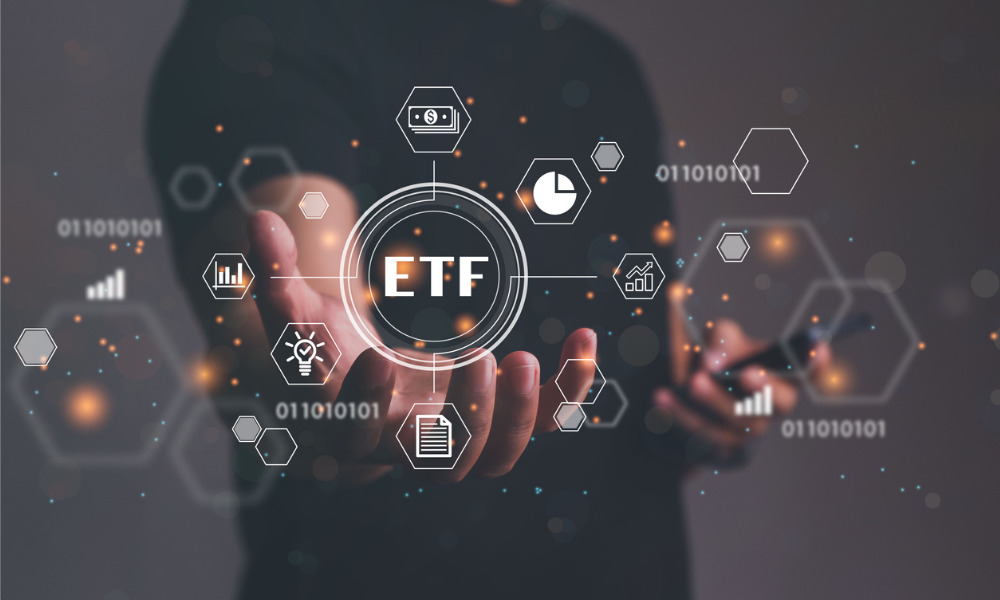Check out the latest trends from institutions to advisors

While ESG exchange-traded funds (ETFs) are doubling and advisors are learning more about them to share with clients, Canadian institutional investors are also using ETFs in different ways and holding them much longer than before.
“The impression I have is a number of years ago, institutions would use ETFs for short holding periods or as completion tools,” said Rob Butler, the Prairies Director for BMO. “The impression we have is that ETFs on the institutional side of the business now are being used in different ways more as maybe a core position or a core exposure, but they’re holding on to these ETFs or positions for a longer period of time.”
Patrick McEntyre, Managing Director, Electronic Trading and Services, for the National Bank Financial, National Bank of Canada, agreed. Speaking at the BMO ETFs Economic Forum on Innovation in ETFs, he said: "Historically, institutions have almost entirely used ETFs for short-term asset management, but they now understand these tools are extremely flexible and can be used for more than the asset tilts they were doing.
“So, if you’re missing either a sector or a country exposure, you would add that to your portfolio on a short-term basis to get that extra juice without messing up your active managers,” he said. “We definitely have seen that over the last five years, maybe a bit more tilted to using them as long-term holdings.”
McEntyre added, “it’s coming because there are just more and more flavours and more cuts available.” So, he said that while the core is still useful for short-term asset management, the explore feature means asset holders, like large institutions, don’t need to acquire – or find someone with – the expertise to manage mortgage-backed securities. They can hold that in a bond or other sleeve for a long time and essentially outsource a difficult asset class.
“We see this happening with foreign exposures, where large asset managers will only want to hold on to one or two foreign securities, and it’s actually cheaper to hold a local list ETF,” he added. “So, essentially, the structure, because it’s local, transparent, and easy to access, has changed the way the large institutions view that exposure.”
McEntyre said that he’s talked to a lot of institutions that do that because they like the sector and macro view of it, but don’t want to acquire the expertise. “So, it’s easier, cheaper, and more transparent to be able to transact it in an ETF,” he added.
Mark Raes, Managing Director, Head of Products at BMO Global Asset Management, added, “when we look at the last five years and how the ETF market is maturing with the trading volumes, narrowing of spreads, and lowering of fees for an institution, all of a sudden, ETFs are very much on an even playing field with some of the other tools they can use.
“That’s on top of the benefits you get from just taking more precise or differentiated exposures,” he added. “Then, when you think about it for advisors and investors, they’re getting all of those benefits to have essentially these core ETFs being priced and traded with institutional efficiency and pricing. So, it’s a great win all around.”
The panellists touched on hedging and the impact of rising interest rates, but then Andre Rincon, TD’s Director of Equity Derivatives and ETF Strategy predicted that the assets under management (AUM) for ESG ETFs in Canada would double again this year from the $7.7 billion in AUM and 95 ESG ETFs it currently has.
“It’s more than doubled every single year over the last few years,” he said. “I do believe that it will continue to happen.”
While McEntyre said 75% of all the ESG ETF activity has been institutionally-driven, that mix has shifted a little during COVID.
“You’re seeing a lot more advisors get into that space,” he said. “We actually have a lot of advisors at TD who have pure ESG models.”
Raes noted that some investors and institutions have most recently been focusing more on the “E” – the climate or environmental – aspect of ESGs. He’s curious to see what happens in more thematic ESGs in the short-term, but he’s expecting to see a convergence with the broad market ETFs and indexes in the long-term because so much is happening in the ESG marketplace right now, especially with different types of reporting.
Raes said institutions have been influencing the new ESG variations because “they’re not just investing for returns, but investing essentially to help the world.” But, he noted that most of the advising community is seeking education because it’s still in the early stages of catch-up.
“The investors have a lot of interest, but I would say it’s much more high level,” he said. “They know they want ESG or responsible investing, but they don’t necessarily know the nuances of the different products and how to go about it. So, they’re relying on investment professionals to help them.”



